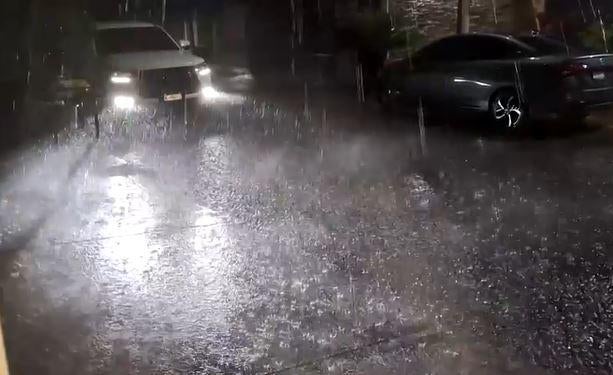The rapid strengthening of Hurricane John caught the Mexican tourist destinations of Acapulco and Puerto Escondido by surprise.

Puerto Escondido, Mexico – Hurricane John hit Mexico’s southern Pacific coast with flood-threatening strength after intensifying into a major hurricane in less than an hour. It made landfall near the town of Punta Maldonado late Monday night as a Category 3 hurricane with maximum sustained winds of 120 mph. John’s rapid recovery forced the authorities to rush to continue and warn the people of their possible destruction.
“Seek the heights, protect yourself and don’t forget that life is the most important thing; material things can be changed. We are here,” Mexican President Andrés Manuel López Obrador wrote on social media X.
By early Tuesday, John had weakened to a Category 2 hurricane with sustained winds of 100 mph, according to the US National Hurricane Center. It was expected to hit Punta Maldonado and the nearby tourist destinations of Acapulco and Puerto Escondido before weakening to a high point inland.
David Zamora/Reuters
The center said before the landfall that “life-threatening” storms and floods were already ravaging the Pacific coast near Oaxaca.
Hurricane John shows an increasing threat of rapid intensification
The unexpected increase in strength surprised scientists, authorities and local residents, something AccuWeather Senior Meteorologist Matt Benz and other experts have attributed to the warm ocean, which fuels the storms.
As a result, dramatic increases in hurricane strength have occurred, Benz said.
“These are storms we have never faced before,” he said. “Quick hardening it has happened more often in modern times than in recorded history. So that tells us something is going on there.”
Rapid intensification is defined by meteorologists as an increase in the maximum sustained winds of a tropical cyclone of at least 30 knots (about 35 mph) in a 24-hour period, according to the US National Hurricane Center.
Residents were tense in Oaxaca’s coastal towns as the forecast changed and authorities responded.
Laura Velázquez, a coordinator for the civil protection agency, told residents of the Pacific coast towns that they should leave their homes and go to shelters to “protect their lives and that of their families.”
“It is very important that all citizens in the coastal area… take protective measures,” Velázquez said.
Ana Aldai, 33, who works at a restaurant on the beach at the tourist center of Puerto Escondido, said businesses in the area began to close after authorities ordered a halt to all activity on the area’s main beaches.
The governments of Guerrero and Oaxaca said classes will be canceled in many coastal areas on Tuesday.
NOAA
The governor of Oaxaca said the state government had evacuated 3,000 people and set up 80 shelters. It also said it has sent 1,000 soldiers and government workers to deal with the emergency.
Videos on social media from Puerto Escondido showed tourists in flip-flops walking in heavy rain and fishermen pulling their boats out of the water. Heavy rains in recent days have left some roads in the region in a critical condition.
Aldai said he was “upset” because authorities arrived so quickly. “There was no opportunity to buy the necessary things. That worries us too,” he said.
A continuing impact on the coast that Otis hit last year
Meteorologist Benz, expressed concern that the storm may slow down once it makes landfall, leaving the storm around the coast, which could cause even more damage.
The storm is bad news for the region, which last year was blocked by Otis, a similar storm that is rapidly intensifying.
Otis destroyed the city of Acapulco, where the inhabitants had little warning of the force of what was about to strike them. One of the fastest-growing hurricanes ever seen, scientists at the time said it was a result of climate change.
Otis knocked out electricity in the town for days, leaving bodies scattered on the beach and desperate family members searching for their missing loved ones. Much of the city was left in a state of lawlessness and thousands ran into shops, looking for food and water.
The López Obrador government has come under heavy criticism for its slow response to Otis, but the administration has since promised to pick up the pace.
President-elect Claudia Sheinbaum said her government plans to work to develop an early warning system, similar to what the country has in place for earthquakes.
Through Thursday, John is expected to produce 6 to 12 inches of rain in coastal areas of the Chiapas region with more isolated areas. In areas along the coast of Oaxaca to southeast Guerrero, between 10 and 20 inches of rain with high isolated amounts can be expected through Thursday.
“You’re going to feel the effects of the storm for the next few weeks to a few months,” added meteorologist Benz.
Source link





